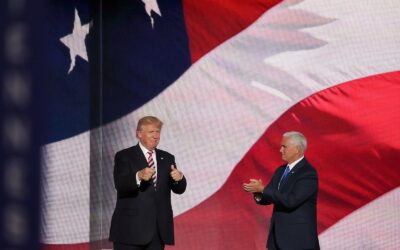Lobbying for Manufacturing Regulations, Taxes, and Other Issues
With the development of new technologies that allow firms to produce at a faster and more efficient rate comes the creation of taxes and manufacturing regulations that are put in place to ensure that convenience does not come before safety. For manufacturers these taxes and regulations can feel prohibitive. Manufacturers can work with lobbyists to advocate for change to ease the burden of restrictions from taxes and regulations.
Recent Industry Production and Employment
The last fifty years have brought with them a surplus of changes and new circumstances. For starters, while manufacturing’s Gross Domestic Production (GDP) in the United States has remained constant, computers and electronics now contribute towards a much larger portion of the GDP.
However, ninety percent of products manufactured today in the United States do not fall into that category of technology and have seen a rapid decline in their production and consumption rates.
Along with these changes in the products contributing most to the GDP of the manufacturing sector, overall the manufacturing share of employment has decreased by nearly 10 percent since 1979. This decrease in workers has been attributed to an increase in employment opportunities in other industries, such as business, education, and hospitality services.
Despite these changes in the manufacturing sector, one thing that has remained constant is its integral role in society. With such an important job of providing goods to the general public, it is important to understand the various taxes, regulations, and limitations that this industry is facing today and how they can be better represented.
Taxation
Taxation in the manufacturing sector serves the purpose of ensuring that this sector works the most efficiently, producing quality goods while also providing optimal service and a safe work environment.
There are a variety of taxes that have been applied to manufacturing firms, and they fall into two different categories- taxes on production and taxes on products.
Production Taxes:
Production taxes are paid independently of the actual volume of their production. This means that the amount of products produced is not correlated with these taxes and will not cause an increase nor a decrease in this tax amount. Some examples of production taxes include land revenue taxes.
Product Taxes:
Product taxes are dependent on the volume of production and typically cover different areas such as import and export taxes and excise taxes. Excise taxes refers to any tax imposed on a specific good or service and is dependent on the product being produced or the service being provided. In the case of a manufacturing company, this tax is often paid by the company and is taken into account when determining the sale cost of the product or service.
Manufacturing Regulations- Air and Water Quality
Due to the large impact that manufacturing companies and factories can have on the environment, various regulations have been put in place to limit this impact and protect factories’ surrounding areas. The two areas of most concern to the general public are those of air and water quality.
Air Quality Regulations:
In regards to air quality regulations, the Clean Air Act (CAA) is the federal law that governs and regulates all sources of air emission. The regulations put in place are then applied specifically from location to location, dependent on their personal emissions.
This amount is quantified by dividing the weight of the pollutant by the unit weight, distance, volume, or time duration of the activity that produces the pollutant.
Water Regulation:
As for water quality regulations, this refers to the polluting of water resources such as aquifers or bodies of water that are or could be used to provide drinking water to the community.
Water contamination primarily happens due to under regulated or unsupervised human activity. Since water is a precious commodity, the government works hard to create regulations to protect it from contamination.
PFOA and DuPont
Before water regulations were in effect, there were issues with manufacturers pouring byproducts directly into rivers, lakes, and other bodies of water. While this sounds like 1800s London, it has happened in the last ten years. A famous example is the Dupont Factory in West Virginia which dumped PFOA, a byproduct from making Teflon, into a major river. This led to cattle being poisoned and dying.
Examples of Manufacturing Regulations:
Examples of laws and regulations put in place on manufacturing firms to prevent water contamination include:
- The Ground Water Rule which ensures that no harmful chemicals enter the different water bodies and sources used for drinking water
- Underground Injection Control Program which regulates building sites during construction to ensure fluids and disposal are dealt with properly,
- Source Water Protection which ensures the safety of water as it travels from the original source to people’s homes.
While it is obvious that disposing of harmful chemicals into bodies of water that are used to provide water to humans and animals, there may be some regulations that are overly stringent and impede the manufacturing processes.
Impact of Taxes and Manufacturing Regulations on Production
While these government imposed taxes and manufacturing regulations protect workers as well as the environment, they often also lead to inconvenient burdens and unnecessary problems that the sector is required to overcome.
One of the more large-scale issues is that a lot of taxes passed over the manufacturing sector are biased against capital-intensive manufacturers, which inhibits their ability to deduct capital costs the same way that they can deduct labor costs.
Another impact of these taxes is an increase in the selling price of products as companies try to compensate for the amount of money they have to pay to create the product or goods, as well as a financial burden for those wishing to start or maintain their own business.
Taking Action
While these manufacturing regulations apply to all companies and businesses in the manufacturing sector, they can lead to individualized hurdles and problems that companies have to overcome. However, with the help of a lobbyist these companies can make their voices heard and work to obtain real solutions to the burdens that these taxes and regulations can cause.
IM Flash Technologies Tax Incentives
IM Flash Technologies is a manufacturing company that worked with the Lockhart Group to create an a mutually beneficial solution. IM Flash Technologies wanted to build new facilities in Utah but they wanted a tax break. Stan Lockhart worked with them to identify what specific incentives they needed to expand in Utah. Stan Lockhart then approached the legislature about making a law to attract more businesses.
By working together to determine something that would be beneficial for everyone the stakeholders agreed upon an economic development tax incentive rebate of 30% in exchange for IM Flash promising to remain in Utah for 10 years and increasing salaries so that the average is at least 200% of the median salary range for the county.
Conclusion
The manufacturing sector has continued to expand its abilities and reach as the demand for and creation of materials and commercial goods increases. The taxes and government regulations put in place protect the sector, while also causing a variety of different problems to arise that differ from company to company. However, with the assistance of a lobbyist they are able to defend themselves and see changes be made to better their situation. The Lockhart Group has decades of experience lobbying for companies in Utah and shaping important policy issues. Contact us today to learn how we can help you make your voice heard in politics!



